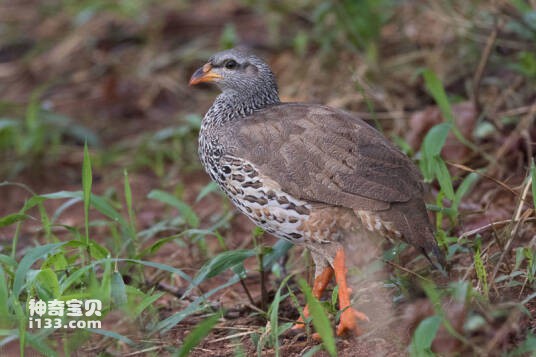francolinus hildebrandti
IUCN
LCBasic Information
Scientific classification
- name:francolinus hildebrandti
- Scientific Name:francolinus hildebrandti,Hildebrandt's Francolin
- Outline:Landfowl
- Family:Chickeniformes Pheasants Polytridges
Vital signs
- length:34-41cm
- Weight:430-645g
- lifetime:No textual research information is available
Feature
The throat, neck, and lower body are white, with mostly black markings, most visible on the chest and abdomen
Distribution and Habitat
It is distributed in Burundi, the Democratic Republic of the Congo, Kenya, Malawi, Mozambique, Rwanda, the United Republic of Tanzania, and Zambia.
They inhabit scattered undergrowth, including brush wastelands, rocky hillsides, and tree-shaded rivers. Like to stand on the edge of the territory's boulders or cliffs and sing.
Appearance
The partridge is 34-41 cm long and weighs 430-645 grams. The crown and cheeks are brown, with some black feathers, and the eyes are black first. The throat, neck, and lower body are white, with mostly black markings, most visible on the chest and abdomen. The back and wings are dark brown with yellow and black stripes. The iris is black. The upper part of the beak is black and the lower part is red. Legs and claws red.
Details
francolinushildebrandti (scientific name: Francolinus Hildebrandti) foreign name Hildebrandt' S. Francolin, there are 3 subspecies.

The partridge mainly lives between 2000 and 2500 m above sea level, but can drop to 650 m locally. They usually live in pairs, but sometimes in small family groups. It feeds on plant bulbs and bulbs, seeds, berries and shoots, as well as small mollusks, termites, ants and other insects. When in danger, he prefers running to escape danger rather than flying. According to local conditions, the peak period is generally from June to July. In Zambia it is June-September; Malawi is from April to November.
Listed on the International Union for Conservation of Nature (IUCN) 2016 Red List of Threatened Species ver 3.1 - Not Threatened (LC).
Protect wild animals and eliminate wild meat.
Maintaining ecological balance is everyone's responsibility!








